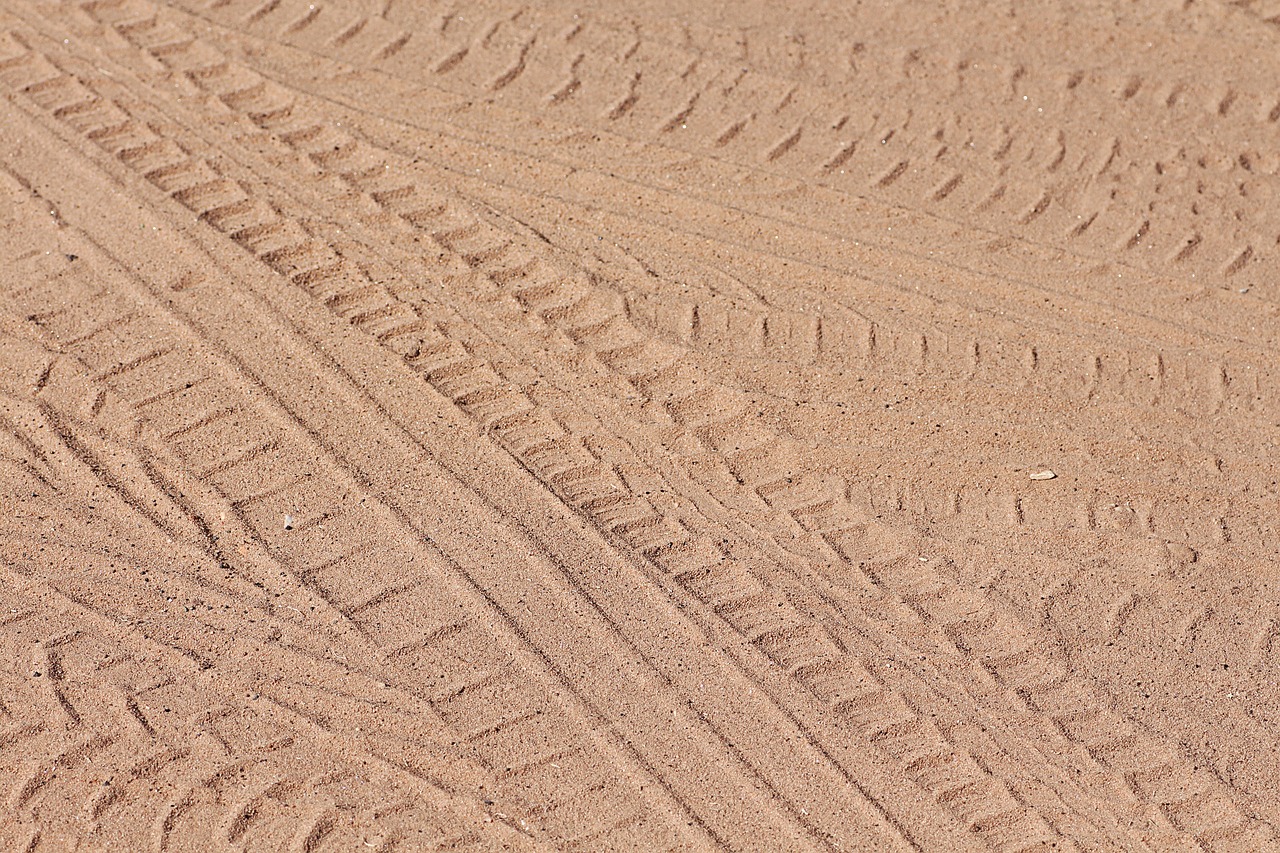This article provides a step-by-step guide on installing wiper blades on a Honda Accord, ensuring clarity and ease for drivers looking to maintain their vehicle’s performance.
Regularly replacing your wiper blades is crucial for maintaining visibility and safety during adverse weather conditions. Worn-out blades can lead to streaks, smears, and reduced visibility, which can be dangerous while driving. For every Honda Accord owner, understanding the significance of this maintenance task is vital.
It’s essential to recognize the signs that indicate the need for wiper blade replacement. Common indicators include:
- Visible cracks or tears in the rubber.
- Streaking on the windshield during use.
- Unusual noises when the wipers are in operation.
- Wipers not making full contact with the windshield.
Replacing your wiper blades at least once a year, or more frequently in harsh weather conditions, can help ensure optimal performance and safety on the road.
Selecting the correct type and size of wiper blades is crucial for effective performance. Refer to your vehicle’s owner manual or visit an auto parts store for assistance in finding the right fit for your specific model year.
Before starting the installation process, gather the following tools:
- New wiper blades (correct size for your model).
- Flathead screwdriver (if necessary).
- Soft cloth (for cleaning the windshield).
Learning the correct method to remove old wiper blades is essential for a successful installation of new ones. Follow these steps for a hassle-free removal:
Identifying the release tab on the wiper arm is the first step in removing the old blades efficiently. This tab is typically found at the base of the wiper blade where it connects to the arm.
Once the release tab is located, gently press it to detach the old wiper blade from the arm without damaging any components. It’s important to handle this step carefully to avoid any unnecessary repairs.
Installing the new wiper blades correctly is vital for ensuring they function properly. Here’s how to do it step by step:
Proper alignment of the new wiper blade with the wiper arm is crucial for optimal performance. Ensure that the blade fits snugly against the arm, following any specific instructions provided by the manufacturer.
After aligning, securing the new wiper blade is the final step in the installation process. Listen for a click sound, which indicates that the blade is firmly attached. Ensure it does not wobble or move freely.
After installation, testing the new wiper blades is essential to ensure they operate correctly. Turn on your vehicle’s wipers and check for smooth operation and clear visibility. If they leave streaks or do not wipe effectively, double-check the installation.
Regular maintenance of wiper blades can prolong their lifespan and maintain effective performance. Here are some tips to keep them in top condition:
- Clean the blades regularly with a soft cloth.
- Inspect for wear and tear every few months.
- Replace blades as needed, especially before winter.
Being aware of common pitfalls during wiper blade installation can save you time and frustration. Avoid:
- Forcing the blades onto the arm.
- Neglecting to secure the blade properly.
- Using incorrect size blades.
By following this guide, you can ensure that your Honda Accord’s wiper blades are installed correctly, enhancing your driving safety and comfort.

Why Replace Wiper Blades?
The importance of maintaining a vehicle cannot be overstated, and one of the most critical components often overlooked is the wiper blades. Regularly replacing your wiper blades is essential for ensuring clear visibility and safe driving conditions, especially during adverse weather. For every Honda Accord owner, understanding the significance of this routine maintenance task can greatly enhance both the performance of the vehicle and the safety of its passengers.
Wiper blades are crucial for maintaining visibility in rain, snow, and other challenging weather conditions. Over time, these blades can wear down, leading to decreased effectiveness. Here are several reasons why replacing wiper blades is vital:
- Improved Visibility: Worn-out wiper blades can leave streaks or fail to clear the windshield entirely, which can significantly impair your ability to see the road ahead.
- Enhanced Safety: Clear visibility is essential for safe driving. Old or damaged wiper blades can increase the risk of accidents, especially in heavy rain or snow.
- Prevention of Further Damage: Failing to replace worn wiper blades can lead to scratches on the windshield, which may require costly repairs or replacements.
- Increased Comfort: Driving with effective wiper blades reduces stress and discomfort during adverse weather conditions, allowing for a more pleasant driving experience.
In addition, many drivers may not realize that wiper blades should be replaced every six months to a year, depending on usage and environmental conditions. Regular checks can help identify any wear and tear early, ensuring that you are always prepared for whatever weather comes your way.
Recognizing the signs that your wiper blades need replacement can help maintain optimal performance:
- Streaking: If your wipers leave streaks on the windshield, it’s time for a replacement.
- Skipping: Wipers that skip or chatter over the glass indicate that they are not making proper contact.
- Cracks or Tears: Inspect your wiper blades for any visible damage. Cracks or tears can severely diminish their effectiveness.
- Age: If your wiper blades are over six months old, consider replacing them as a preventive measure.
By being proactive and replacing your wiper blades when necessary, you can ensure that your Honda Accord remains in top condition, ready to tackle any weather challenge.
In summary, the importance of regularly replacing wiper blades cannot be underestimated. For Honda Accord owners, this simple maintenance task is crucial for ensuring safety and visibility on the road. By paying attention to the signs of wear and understanding the benefits of new wiper blades, you can enhance your driving experience and keep your vehicle performing at its best.

When Should You Replace Wiper Blades?
When it comes to maintaining your vehicle, wiper blades are often overlooked. However, they play a crucial role in ensuring clear visibility during rain or snow. Understanding when to replace wiper blades is essential for every driver, especially for those who frequently navigate through adverse weather conditions.
There are several signs that indicate it might be time to replace your wiper blades:
- Streaking or Smearing: If your wipers leave streaks or smears of water on the windshield, it’s a clear sign that they are worn out and need replacing.
- Chattering: If your wipers make a chattering noise while in use, this could indicate that the rubber has become hard or damaged, reducing their effectiveness.
- Visible Damage: Inspect the rubber blades for cracks, tears, or any signs of wear. If you notice any visible damage, it’s time to replace them.
- Age: Even if your wipers appear to be in good condition, it’s recommended to replace them every 6 to 12 months as the rubber can degrade over time.
- Improper Contact: If the wipers do not make full contact with the windshield, they may not clear water effectively, posing a safety risk.
Regularly checking your wiper blades is a simple yet effective way to ensure your safety on the road. If you notice any of the signs mentioned above, it’s advisable to replace your wiper blades promptly.
In addition to recognizing these signs, consider the following tips for maintaining your wiper blades:
- Clean Your Wipers: Regularly clean the rubber blades with a damp cloth to remove dirt and debris, which can help extend their lifespan.
- Use Quality Products: Always opt for high-quality wiper blades that are specifically designed for your vehicle model.
- Check the Windshield: Ensure your windshield is clean and free of any obstructions, as this can impact wiper performance.
By staying vigilant and proactive about your wiper blade maintenance, you can significantly enhance your driving experience and safety. Remember that clear visibility is paramount, especially during inclement weather. Don’t wait until the last minute to address wiper issues; regular checks and timely replacements can make all the difference in your driving safety.

Choosing the Right Wiper Blades for Your Honda Accord
Selecting the correct type and size of wiper blades is crucial for effective performance. Wiper blades are essential for maintaining visibility during rain and adverse weather conditions. Therefore, it’s important to understand how to find the right fit for your specific model year of Honda Accord. Here are the steps to ensure you make the best choice:
- Know Your Model Year: Different model years of the Honda Accord may require different sizes and types of wiper blades. Always check your owner’s manual or consult a reliable source to determine the correct specifications.
- Types of Wiper Blades: There are several types of wiper blades available, including:
- Conventional Blades: These are the traditional style and are generally less expensive.
- Beam Blades: These offer a more aerodynamic design, providing better contact with the windshield and improved performance in heavy rain.
- Hybrid Blades: Combining features of both conventional and beam blades, hybrid blades offer a balance of performance and cost.
- Measure Your Wiper Blades: If you’re unsure about the size, measuring the length of your existing wiper blades is a reliable method. Use a tape measure to get the exact length, as this will help you find the right replacement.
- Consider Seasonal Needs: Depending on your local climate, you may want to choose wiper blades that are specifically designed for winter or summer conditions. Winter blades often have a rubber boot to prevent ice buildup, while summer blades may provide better flexibility and performance in warm weather.
- Check Reviews and Ratings: Researching customer reviews and expert ratings can provide valuable insights into which wiper blades perform best for your Honda Accord. Look for brands that are known for durability and effectiveness.
By following these guidelines, you can ensure that you select the right wiper blades for your Honda Accord. Not only will this improve your visibility during driving, but it will also enhance your overall safety on the road. Remember, regular maintenance and timely replacement of wiper blades are key to maintaining their effectiveness.

Tools Needed for Wiper Blade Installation
When it comes to maintaining your Honda Accord, one of the simplest yet most effective tasks is replacing the wiper blades. Gathering the necessary tools before starting the installation process can save time and ensure a smooth experience. Here’s what you’ll need:
| Tool | Description |
|---|---|
| New Wiper Blades | Ensure you have the correct size and type for your specific Honda Accord model. Check your owner’s manual or consult a parts store for guidance. |
| Flathead Screwdriver | This tool may be useful for prying off any stubborn old blades or adjusting the wiper arm if necessary. |
| Soft Cloth | A soft cloth is essential for cleaning the windshield before installation, ensuring optimal visibility. |
| Safety Glasses | Wearing safety glasses can protect your eyes from any debris or broken parts during the installation process. |
| Gloves | Using gloves can help prevent any cuts or scrapes while handling the wiper arms and blades. |
Having these tools ready before you begin will not only streamline the installation process but also help avoid unnecessary interruptions. Here’s a closer look at why each tool is important:
- New Wiper Blades: Choosing the right blades is crucial for effective performance. Make sure they match your vehicle’s specifications for a proper fit.
- Flathead Screwdriver: This tool can assist in removing any old blades that are stuck, making the process easier and more efficient.
- Soft Cloth: A clean windshield is vital for the new blades to function correctly. Dirt and grime can hinder visibility, so make sure to wipe it down.
- Safety Glasses: Protecting your eyes is always a good idea when working on your vehicle. Safety should be a top priority.
- Gloves: Wearing gloves can help you maintain grip and control while also protecting your hands from sharp edges.
By ensuring you have these tools on hand, you can approach the installation of your wiper blades with confidence. This preparation not only enhances your efficiency but also contributes to a safer driving experience. Remember, a well-maintained vehicle is a reliable one, and taking the time to replace your wiper blades is a simple yet impactful step in that direction.

Step-by-Step Guide to Removing Old Wiper Blades
Replacing wiper blades is a crucial maintenance task that every Honda Accord owner should be familiar with. Learning the correct method to remove old wiper blades is essential for a successful installation of new ones. This step-by-step guide will help you navigate the removal process with ease, ensuring a hassle-free experience.
Before diving into the removal process, it’s important to gather the necessary tools and materials. You will need:
- New Wiper Blades: Ensure you have the correct size for your Honda Accord.
- Cleaning Cloth: For cleaning the windshield and wiper arm.
- Safety Glasses: To protect your eyes during the process.
Now, let’s break down the removal process into simple steps:
The first step in removing the old wiper blades is to locate the wiper arm release tab. This tab is typically found at the base of the wiper blade where it connects to the wiper arm. It may be a small button or lever that needs to be pressed or lifted. Take a moment to familiarize yourself with its location, as this is crucial for an efficient removal.
Once you have located the release tab, gently lift the wiper arm away from the windshield. Be cautious not to pull it too hard, as this could damage the wiper arm or the windshield. Lifting the arm allows you to access the blade more easily.
With the wiper arm lifted, it’s time to detach the old wiper blade. Press the release tab while sliding the blade downwards off the hook of the wiper arm. You may need to wiggle it slightly if it feels stuck. Be careful not to apply excessive force to avoid breaking any components.
Before installing the new wiper blades, take a moment to clean the wiper arm with a cloth. This step is important because it helps remove any dirt or debris that could affect the performance of the new blades. A clean surface ensures better contact and longevity for your new wiper blades.
If your Honda Accord has two wiper blades, repeat the above steps for the second blade. Make sure to follow the same procedure to ensure consistency and ease of installation.
After successfully removing the old wiper blades, you are now ready to install the new ones. Make sure to check that the new blades are the correct size and type for your Honda Accord. This preparation will ensure that your new wipers fit perfectly and function effectively.
By following these steps, you can easily remove old wiper blades and prepare for the installation of new ones. Remember, maintaining your wiper blades is vital for ensuring clear visibility during adverse weather conditions. Regular checks and replacements will enhance your driving safety and comfort.
Locate the Wiper Arm Release Tab
When it comes to maintaining your vehicle’s performance, knowing how to properly replace wiper blades is essential. One of the critical steps in this process is locating the wiper arm release tab. This tab plays a vital role in ensuring the efficient removal of old wiper blades, enabling you to install new ones seamlessly.
The wiper arm release tab is a small, often plastic component that secures the wiper blade to the wiper arm. Understanding its location and function is crucial for every Honda Accord owner. By identifying this tab, you can avoid unnecessary damage to your vehicle while replacing the blades.
Properly locating the release tab not only facilitates the removal of old wiper blades but also ensures that the installation of new blades is done correctly. If this step is overlooked, it can lead to complications such as:
- Damage to the Wiper Arm: Forcing the blade off without releasing the tab can bend or break the arm.
- Improper Blade Installation: If the old blade isn’t removed correctly, the new blade may not fit securely.
- Increased Risk of Accidents: Worn or improperly installed wiper blades can impair visibility during rain or snow.
Here’s a step-by-step guide to help you locate the release tab effectively:
- Lift the Wiper Arm: Start by gently lifting the wiper arm away from the windshield. This action will give you better access to the blade and the release tab.
- Inspect the Connection: Look closely at the point where the wiper blade meets the wiper arm. The release tab is usually found on the underside of this connection.
- Identify the Release Mechanism: Depending on the model, the release tab may be a small lever or a button. Familiarize yourself with its shape and size.
Once you have located the release tab, follow these tips for a smooth removal process:
- Gentle Pressure: Apply gentle pressure to the release tab while pulling the blade downwards. This will disengage the blade from the arm.
- Check for Obstructions: Ensure there are no obstructions or debris that could hinder the removal process.
- Use a Soft Cloth: To avoid scratches, consider placing a soft cloth between the wiper arm and the windshield while you work.
After successfully locating the release tab and removing the old wiper blades, you can proceed to install new blades. Ensure that you select the correct size and type for your Honda Accord. Proper installation will enhance visibility and safety during inclement weather.
In summary, identifying the release tab on the wiper arm is the first and crucial step in removing old blades efficiently. By following the steps outlined above, you can ensure a hassle-free experience that will keep your wiper system functioning optimally.
Detach the Old Wiper Blade
When it comes to maintaining your vehicle, one of the most critical tasks is replacing the wiper blades, especially for a Honda Accord. A properly functioning wiper system ensures clear visibility during rain and adverse weather conditions. In this section, we will delve into the process of detaching the old wiper blade, which is a vital step in the installation of new ones.
To begin, it’s essential to approach the removal of the old wiper blade with care to avoid damaging any surrounding components. Here’s a detailed guide to help you through the process:
- Step 1: Position the Wiper Arm
Before you start, ensure that the wiper arm is in the upright position. This will give you better access to the release tab and the blade itself. - Step 2: Locate the Release Tab
The release tab is typically found at the base of the wiper blade where it connects to the wiper arm. Gently lift the wiper blade away from the windshield to expose this tab. - Step 3: Press the Release Tab
Carefully press down on the release tab using your thumb. This action will disengage the locking mechanism that holds the wiper blade in place. - Step 4: Slide the Old Wiper Blade Off
With the release tab pressed, gently slide the old wiper blade downwards off the wiper arm. Take your time to avoid any sudden movements that could cause damage. - Step 5: Inspect the Wiper Arm
After removing the old blade, take a moment to inspect the wiper arm for any signs of wear or damage. This can prevent future issues when installing new blades.
By following these steps, you can successfully detach the old wiper blade without causing any harm to the wiper arm or other components. Remember, patience is key during this process.
Once you have removed the old wiper blade, it’s advisable to clean the wiper arm and the windshield area where the blade makes contact. This ensures that the new wiper blade will have a clear surface to operate on, enhancing its efficiency and lifespan.
In summary, the process of detaching the old wiper blade from your Honda Accord is straightforward when approached with care and attention to detail. Following these steps will set you up for a successful installation of your new wiper blades, contributing to safer driving conditions.

Installing New Wiper Blades
is a straightforward process that can significantly enhance your driving experience, especially during rainy or snowy conditions. Proper installation ensures that the blades make full contact with the windshield, providing optimal visibility and safety. Below is a detailed step-by-step guide to help you successfully install new wiper blades on your Honda Accord.
Before you begin, make sure you have the following items ready:
- New wiper blades (specific to your Honda Accord model)
- Clean cloth for wiping the windshield
- Safety gloves (optional)
Start by lifting the wiper arms away from the windshield. This will give you better access to the wiper blades. Be careful not to let them snap back onto the glass, as this could cause damage.
To detach the old wiper blades, locate the release tab on the wiper arm. Press or pull this tab to unlock the blade. Gently slide the blade off the arm. If you encounter resistance, double-check that the release tab is fully engaged.
Take your new wiper blades out of the packaging. Most blades come with a universal adapter that can fit various wiper arms. Ensure that the adapter is securely attached to the blade before installation.
Position the new wiper blade at the end of the wiper arm. Make sure that the blade is aligned properly, as this will ensure effective wiping. The blade should sit parallel to the arm for optimal contact.
Once aligned, slide the new wiper blade onto the wiper arm until you hear a click sound, indicating that it is securely locked in place. Tug gently on the blade to confirm that it is firmly attached.
Follow the same steps for the other wiper blade. It’s important to replace both blades at the same time for balanced performance.
After installation, lower the wiper arms back onto the windshield. Turn on your vehicle and activate the wipers to test their functionality. Check for any streaking or skipping, which may indicate improper installation.
To prolong the life of your new wiper blades, regularly clean them with a damp cloth and inspect them for damage. Replace them every 6 to 12 months, or sooner if you notice decreased performance.
By following these steps, you can ensure that your new wiper blades are installed correctly, enhancing your visibility and safety on the road. Regular maintenance and timely replacements will keep your Honda Accord performing at its best, no matter the weather conditions.
Align the New Wiper Blade
When it comes to maintaining your Honda Accord, the installation of new wiper blades is a task that should not be overlooked. One of the most critical steps in this process is ensuring that the new wiper blade is properly aligned with the wiper arm. This alignment is essential for achieving optimal performance and ensuring that the blades function effectively, providing clear visibility during adverse weather conditions.
Proper alignment of the wiper blade prevents issues such as streaking and skipping, which can occur if the blade does not make full contact with the windshield. A well-aligned wiper blade will ensure that water, snow, and debris are effectively cleared from the glass, enhancing your visibility and safety while driving.
- Start with the Wiper Arm Position: Before installing the new wiper blade, ensure that the wiper arm is in the correct position. It should be raised to a vertical position for easy access.
- Inspect the Wiper Blade Connector: Examine the connector on the new wiper blade. It should match the shape and size of the wiper arm’s attachment point. If necessary, consult your vehicle’s manual to confirm compatibility.
- Attach the Wiper Blade to the Wiper Arm: Align the connector of the new wiper blade with the wiper arm. Slide it into place until you hear a click, indicating that it is securely attached.
- Check the Alignment: Once the blade is attached, gently lower the wiper arm back onto the windshield. The blade should make full contact with the glass without any gaps. If there are gaps, you may need to adjust the angle of the wiper arm slightly.
- Test the Wiper Functionality: After alignment, test the wipers by activating them. Observe their movement to ensure they sweep uniformly across the windshield. If they skip or leave streaks, reassess the alignment and make necessary adjustments.
Even with careful installation, some common issues may arise:
- Improper Attachment: If the blade is not securely attached, it may detach during use, leading to dangerous driving conditions.
- Incorrect Blade Size: Using the wrong size wiper blade can result in poor performance. Always verify the size before purchase.
- Worn Wiper Arms: If the wiper arms are bent or damaged, they may not hold the blades in the correct position, affecting performance.
To ensure a successful installation, consider the following:
- Read the Instructions: Always refer to the manufacturer’s instructions for specific guidance on installation and alignment.
- Regular Maintenance: Check your wiper blades regularly for wear and tear, and replace them as needed to maintain optimal performance.
- Seek Professional Help: If you’re unsure about the installation process, don’t hesitate to consult a professional mechanic for assistance.
By following these steps and tips, you can ensure that your new wiper blades are properly aligned, providing you with the clear visibility you need for safe driving in all weather conditions.
Secure the Wiper Blade in Place
After aligning the new wiper blade, the next critical step is to . This ensures that the blade functions properly and provides optimal visibility during inclement weather. Below are some best practices to ensure a firm attachment of the wiper blade.
Securing the wiper blade correctly is essential for several reasons:
- Safety: A loose wiper blade can detach while driving, leading to dangerous situations.
- Performance: Properly secured blades ensure effective wiping, enhancing visibility during rain or snow.
- Durability: Correct installation prolongs the lifespan of both the wiper blade and the wiper arm.
Follow these steps to ensure that your new wiper blade is securely attached:
- Check Alignment: Before securing, double-check that the wiper blade is correctly aligned with the wiper arm. Misalignment can lead to uneven wiping.
- Press Down Firmly: Once aligned, press down on the wiper blade until you hear a click. This sound indicates that the blade is locked into place.
- Test the Connection: Gently tug on the wiper blade to ensure it is securely attached. If it feels loose, repeat the alignment and securing process.
To ensure the best results when securing your wiper blades, consider the following tips:
- Read the Instructions: Always refer to the manufacturer’s instructions that come with your wiper blades for specific installation guidelines.
- Use the Right Tools: Having the right tools on hand, such as a flathead screwdriver, can assist in securing the blade more effectively.
- Inspect Regularly: After installation, make it a habit to inspect the wiper blades regularly for any signs of wear or loosening.
Here are some common pitfalls to avoid:
- Forgetting to Lock: Failing to hear the click sound can lead to a loose blade, so always ensure it is locked in place.
- Over-tightening: While it’s important to secure the blade, over-tightening can damage the wiper arm or the blade itself.
- Neglecting Maintenance: Regularly check that the wiper blades remain securely attached, especially after prolonged use.
By following these guidelines, you can ensure that your new wiper blades are securely installed, providing you with clear visibility and safety on the road. Proper installation not only enhances performance but also extends the life of your wiper blades.

Testing Your New Wiper Blades
After successfully installing new wiper blades on your Honda Accord, the next critical step is to test your new wiper blades. This process is essential to ensure that they operate correctly and provide clear visibility during use, especially in adverse weather conditions.
Why is testing important? New wiper blades can sometimes have installation issues or defects that may compromise their performance. By performing a thorough test, you can identify any potential problems before they affect your driving experience.
- Check for Proper Movement: Activate the wiper blades to observe their movement across the windshield. They should move smoothly without any skipping or stuttering. If they seem to stick or fail to cover the entire surface, it could indicate improper installation.
- Look for Streaking: Once the wipers are in motion, watch for any streaks left on the glass. Streaking can be a sign of worn-out blades or incorrect blade positioning. If you notice streaks, it may mean the wiper blades are not making adequate contact with the windshield.
- Test in Different Conditions: Ideally, you should test the wiper blades in various conditions. Start with a light mist of water to see how well they clear the glass. Then, progress to heavier sprays or simulated rain to evaluate their performance under more challenging circumstances.
- Listen for Unusual Noises: Pay attention to any sounds while the wipers are in operation. Squeaking or grinding noises can indicate a problem with the wiper arm or blade alignment, which may require further adjustment.
In addition to these tests, it’s also wise to regularly check the wiper blades for any signs of wear or damage after installation. Look for cracks, tears, or hardening of the rubber. Maintaining your wiper blades can significantly enhance their lifespan and performance.
Lastly, remember that proper maintenance extends beyond just testing. Regularly clean your windshield and the wiper blades themselves to prevent dirt and debris from building up, which can hinder their effectiveness. By ensuring that your wiper blades are in top condition, you can guarantee a safer driving experience, especially during rain or snow.
Overall, testing your new wiper blades is a straightforward yet crucial step in ensuring that your vehicle remains safe and functional. Taking the time to verify their performance can save you from potential hazards on the road.

Maintenance Tips for Wiper Blades
Maintaining your wiper blades is crucial for ensuring they function effectively and last as long as possible. Regular maintenance not only prolongs the lifespan of the blades but also guarantees clear visibility during inclement weather. Here are some essential tips to keep your wiper blades in top condition:
- Inspect Wiper Blades Regularly: Make it a habit to check your wiper blades every month. Look for signs of wear such as cracking, splitting, or any visible damage. This simple check can help you identify problems before they affect your visibility.
- Clean the Blades: Dirt and debris can accumulate on your wiper blades, leading to streaking and reduced effectiveness. Use a soft cloth or sponge with mild soap and water to clean the rubber part of the blades. Rinse thoroughly and dry with a clean cloth.
- Check the Windshield: A clean windshield is just as important as clean wiper blades. Ensure that your windshield is free from dirt, grime, and any obstructions. This will help your wipers function more efficiently and reduce wear on the blades.
- Use the Right Washer Fluid: Always use a high-quality washer fluid that is suitable for your vehicle. Avoid using plain water, as it can freeze in colder temperatures and may not effectively clean the windshield.
- Park Properly: When parking your vehicle, try to avoid leaving your wipers in contact with the windshield for prolonged periods, especially during extreme weather. This can prevent the rubber from becoming misshapen or damaged.
- Replace Wiper Blades Annually: Even with proper maintenance, wiper blades typically need to be replaced every six to twelve months. Keeping track of when you last changed them can help you stay on schedule.
- Store Wiper Blades Properly: If you purchase spare wiper blades, store them in a cool, dry place away from direct sunlight. Exposure to UV rays can degrade the rubber over time.
- Consider Seasonal Changes: Different seasons can affect the performance of your wiper blades. In winter, consider using winter wiper blades that are designed to handle snow and ice better than standard blades.
By following these maintenance tips, you can ensure that your wiper blades remain effective and reliable, providing you with the visibility needed for safe driving. Remember, regular checks and cleaning will not only extend the life of your blades but also enhance your overall driving experience.

Common Mistakes to Avoid During Installation
Installing wiper blades may seem straightforward, but there are several common mistakes that can lead to frustration and poor performance. Being aware of these pitfalls can save you both time and effort. This section outlines the key mistakes to avoid during the installation process.
Understanding the significance of proper installation is crucial. Incorrectly installed wiper blades can lead to streaking, reduced visibility, and even damage to the windshield. Here are some common mistakes to watch out for:
- Ignoring the Manufacturer’s Instructions: Every wiper blade comes with specific installation guidelines. Failing to follow these can result in improper fitment.
- Not Checking Compatibility: Ensure that the wiper blades you purchase are compatible with your Honda Accord’s model year. Using the wrong size can significantly affect performance.
- Forgetting to Clean the Wiper Arms: Before installing new wiper blades, it’s essential to clean the wiper arms thoroughly. Dirt and debris can interfere with the blade’s effectiveness.
- Improper Alignment: Aligning the new wiper blade incorrectly can lead to uneven wiping. Make sure to align it properly with the wiper arm for optimal performance.
- Neglecting to Secure the Blade: After installation, it’s crucial to ensure that the wiper blade is securely attached. A loose blade can detach while driving, posing a safety risk.
- Testing Before Installation: Some may be tempted to test the wiper blades before fully securing them. This can lead to misalignment or detachment of the blade.
To avoid these common mistakes, consider the following tips:
- Read the Instructions: Always start by reading the installation instructions that come with your new wiper blades.
- Gather the Right Tools: Before you begin, ensure you have all necessary tools on hand, such as a flathead screwdriver and a clean cloth.
- Take Your Time: Rushing through the installation can lead to mistakes. Take your time to ensure everything is done correctly.
- Double-Check Your Work: After installing the wiper blades, double-check to ensure they are aligned and securely fastened.
By being mindful of these common mistakes and following best practices, you can ensure a smooth and effective wiper blade installation process. This not only improves your visibility during adverse weather but also enhances the overall safety of your driving experience.
Frequently Asked Questions
- How often should I replace my wiper blades?
It’s recommended to replace your wiper blades every 6 to 12 months, depending on your driving conditions and climate. If you notice streaking or skipping, it’s time for a change!
- What size wiper blades do I need for my Honda Accord?
The size of wiper blades can vary by model year. Check your owner’s manual or use a wiper blade size chart to find the perfect fit for your Honda Accord.
- Can I install wiper blades myself?
Absolutely! Installing wiper blades is a straightforward process that you can do at home with just a few tools. Follow the step-by-step guide provided in the article, and you’ll be good to go!
- What tools do I need for wiper blade installation?
You’ll typically need a flathead screwdriver and, in some cases, pliers. Make sure to have these handy before you start the installation!
- How can I maintain my wiper blades?
To keep your wiper blades in top condition, regularly clean them with a damp cloth and check for any signs of wear. This simple maintenance can extend their lifespan significantly!



